THE American WESTERN
By Jeffrey-Baptiste Tarlofsky
By Jeffrey-Baptiste Tarlofsky
Lesson 9 consists of eight video lectures and transcripts of those lectures, and six film excerpts. Start with excerpt #1 from Red River and continue down the page in sequence until you reach the end of the lesson.
レッスン9は8本のビデオレクチャー(レクチャーのテキストがビデオレクチャーの下に記載されています)と6 本の動画で構成されています。
このレッスンは、ページをスクロールダウンしながら最初から順番に動画を見たりテキストを読んでください。

Directed & produced by: Howard Hawks
Screen play by: Borden Chase
Starring: John Wayne, Montgomery Clift, Walter Brennan, Joanne Dru
Music by: Dimitri Tiomkin
Distributed by: United Artists
Running time: 133 minutes (Pre-release) 127 minutes (Theatrical)
Budget: $2.7 million
Box office: $9,012,000
Part 1 – Red River (1948), the next film we are going to study, is interesting to compare and contrast with Stagecoach (1939). This is fun to do because you are all now such experts on Stagecoach that you could teach the film, don’t you think?
There are many similarities between the films. Both films are about journeys taken by groups of people who find themselves transformed by that journey. In Stagecoach, Dallas and Doc start the film as outcasts but redeem themselves by assisting Mrs. Mallory who also changes from being a prejudiced snob to a woman who feels compassion and respect for a less fortunate woman, Dallas. Hatfield also redeems himself even though it costs him his life and, of course, we have Mr. Gatewood…the poison…who cannot be redeemed, but does finally have justice served to him. Mr. Peacock, always a good man, stays just the way he is to remind us some people don’t need to change.
Our new characters in Red River will go on a far longer (and larger) journey which will not only change them, but also change the world they live in. This is because Red River is what we call an epic. Please look up the meaning of this word in your dictionaries before you go to Part 2 or use Google translate to find out what the word means.
Part 2
My dictionary defines an epic as:
1: a long narrative poem in elevated style recounting the deeds of a legendary or historical hero. E.g. the Iliad and the Odyssey are epics
2: a novel or drama about a legendary or historical hero
3: a series of events or body of legend or tradition about a legendary or historical hero”
We can add to this list :
4: A movie about a legendary or historical hero”
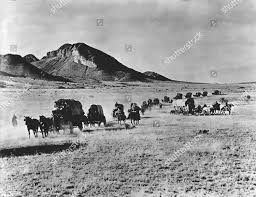
Epics also tend to be long stories that take place over great distances and involve important events in history. With Red River we hit all three of these.
Before we take a look at the first excerpt, I want to tell you about the most obvious thing Red River has in common with Stagecoach: John Wayne. Stagecoach was the film that made John Wayne a Hollywood star, but for many people, including John Ford, Red River was the film that proved he was also a talented actor.
After seeing Red River, John Ford famously said, “I didn’t know the big son of a bitch could act!” Ford was joking of course, because Wayne had acted very well in Stagecoach. But his character in Red River is a far more complex character than The Ringo Kid. Shall we meet him? Let’s go to Excerpt #1 where Thomas Dunson and Nadine Groot leave the wagon train.
Part 3 – Well, at least John Wayne finally kissed the girl! Remember, that as Ringo, he never kissed Dallas in Stagecoach. But these two sure go at it hammer and tongs in this scene (If you say that someone was going at something hammer and tongs, you mean that they were doing it with great enthusiasm or energy). Moreover, Tom’s girlfriend, (we never learn her name by the way), has just begged him to take her with him and reminds him that the sun shines only half the day. This young lady is talking about…well, sex! Of course, she can’t just say, “Hey, big guy, you should take me with you because you will need some sex after a hard day’s work” because the film was released in 1948 and the Production Code still forbade anyone saying something like that.
But writers were clever at getting around these rules and, Borden Chase, the writer of Red River was very good at the kind of writing that suggested sex without actually using language forbidden by the production code. Of course, Dudley Nichols who wrote Stagecoach, managed to make it very clear to the audience that Dallas was a prostitute without ever using that word. But the difference between this young woman and Dallas, is that while Dallas was a prostitute she never once talks about sex in even in a round about way in Stagecoach. Dallas speaks in a way that is really quite pure and innocent throughout the film. But in Red River, this young woman is pouncing on Tom like a tiger. Well, different writers, different stories. Indeed they are. But we will also talk more about why Ringo and Dallas in 1939 were so much more innocent than the characters in Red River.
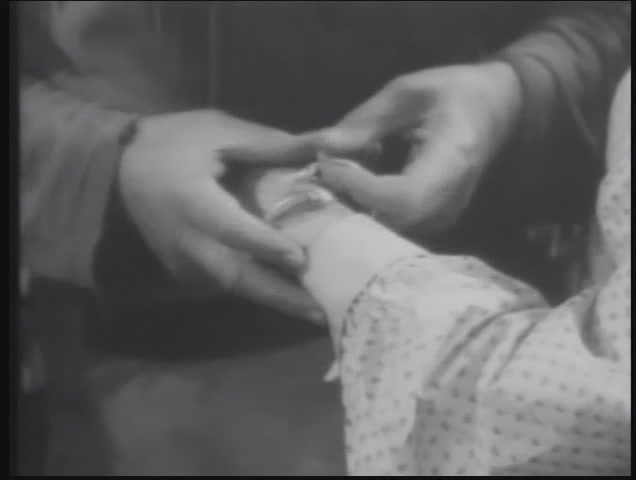
The beginning of Red River is almost like looking at the ending of Stagecoach in a mirror….everything is reversed. At the end of Stagecoach the two lovers, Ringo and Dallas, ride off together into the west and we know that they will be happy together as man and wife. This was the typical Hollywood “happy ending” stuff; boy and girl are together. End. But what we have just seen at the beginning of Red River is two lovers saying goodbye and parting ways. Yes, well, perhaps the rest of the story is about how they find each other after many adventures and are reunited. After all, Thomas Dunson has given the young lady his mother’s bracelet. The gift of this precious family heirloom is obviously Tom’s way of offering her marriage. It is his way of asking her to wait for him and not marry anyone else until he sends for her. It is like an engagement ring. Please go to Excerpt #2
Part 4 – So, while Stagecoach has a happy ending, Red River has a very sad beginning. Thomas Dunson will never be reunited with the woman who told him “the sun only shines for half the day” because she has probably been killed in the Indian attack on the wagon train…that is if she were lucky enough to have been killed quickly. The film does not play on the same fear that Stagecoach plays on; that a white woman taken prisoner by the Indians would be raped and tortured before being killed, but we know she has met a bad end because Thomas finds his bracelet on the wrist of the warrior he has killed.
Wagon Master is based on real history. The Mormons were a relatively new religious group who were violently persecuted in the midwest states of Ohio, Illinois and Missouri. To escape religious persecution, they began to head to the west in 1846. Ford’s film is based on the much later Mormon expedition known as the San Juan Mission or the Hole-in-the-Rock Expedition, which took place in late 1879 and early 1880. They were headed towards what is today southeastern Utah. Interestingly, the events in this film happen at almost exactly the same time as the fictional events in Stagecoach.
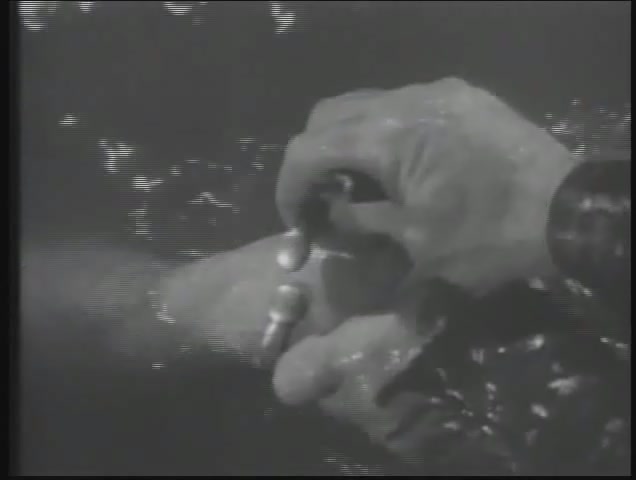
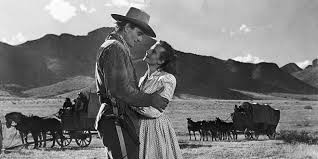
Thomas Dunson will never love another woman.
That bracelet, by the way, is something I want you to keep your eyes on throughout the film.
I am going to cheat a bit now and tell you that this man, Thomas Dunson, is never going to love another woman. The beginning of this film is about his loss of the only woman he will ever love.
Part 5 – Dunson and Groot have found the only survivor from the wagon train, a fourteen year old boy named Matthew Garth who was chasing his lost cow when the Indians attacked. Obviously, Thomas Dunson and Nadine Groot have been together for a long time because when the Captain of the Wagon train asked “are you going with him?” Groot starts to explain, “Captain, me and Dunson…well, it’s me and Dunson”. Now they are taking Matthew with them and one interpretation is to see them as forming a kind of family group….except that this wasn’t exactly what families were supposed to look like in Hollywood movies in 1948. One way to make this family more acceptable or “normal” looking is to assign each member a traditional “role” to play. Rather than being three men (or two men and a boy) of different generations, audiences might imagine (and the writer might suggest) Tom as the Father, Matthew as the son and Groot as either a grandfather…or perhaps even as the “mother”, seriously. I will talk about Groot as Mother figure in later lectures.
The real ages of the actors corresponded closely with the ages of their characters at this point in the move: Wayne was 39, Walter Brennan (Groot) was 50 and Mickey Kuhn (playing young Matt) was 14. Are they just three males helping each other to survive in the old west or do they form a kind of family?
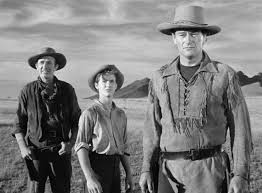
Part 6 – When they arrive at the place Dunson wants to make his ranch they build a fire in order to “brand” the cattle. What was this all about? Take a good look at that landscape. It is mostly grassland with no trees or even stones, just wide-open range. As Dunson says, the land is good for raising cattle because there is plenty for the animals to eat. But the problem was that there was no way (at this time) to fence the animals. So, how would you know which cattle were yours and which belonged to someone else? You would brand your cattle to know which were yours. The word “brand” dates back to Old Norse, the ancient North Germanic language from which modern Scandinavian languages derived. Brand originally referred to a piece of burning wood. As the word came to be used in Old English it evolved to mean ‘burning’ and eventually in Middle English to the verb sense ‘mark with a hot iron’, which in turn gave rise to the noun sense ‘a mark of ownership made by branding’ (mid-17th century). For your homework you will be reading about brands and branding.
Dunson is branding his bull and Matthw’s cow so they will be able to tell the difference between them and anyone else’s cow and bull that might be roaming the range. Matthew sensibly says, “I see a D on that brand but no ‘M’”. That is an excellent point. Given that the cow is legally Matt’s property half the herd produced by Tom’s bull and Matt’s cow should belong to Matt. But Tom tells him “we’ll talk about that later” and then he tells Matt, “I’ll put an M on the brand when you earn it”. Ah…wait a minute. Why should Matt have to “earn” the right to property he already owns? But Matt is only fourteen years old and he obviously depends on Tom and Groot for his survival so he doesn’t have much choice in this matter. Besides, who is there to enforce his legal rights?
Why am I making such a big deal about this? Maybe you think I am missing the point of the story? No, this is my job…and yours, too. We aren’t here in class just to watch the movie for fun. Our job is to try to understand it and learn from it and even question it. One thing I am going to spend a lot of time questioning in this film is Tom’s attitude towards and relationship with rules, contracts, the law and other people’s legal rights. For example, let’s go back to part of the first excerpt for a moment and revisit the moment Tom leaves the Wagon Train.
Part 7 – So, Tom is very clear about how he feels about written contracts. He believes in them and he says that if he had signed one he would obey it. But he also makes it clear that since he didn’t sign a contract he is free to do as he pleases and nobody is going to force him to do what he doesn’t want to do because, as he delicately puts it, “I’m too good a gun for you to argue with”, (i.e., he will defend his rights with that gun). Well, yeah, this is the wild West and men (and women) protected themselves and protected their rights with guns. But let’s see how Tom uses that gun in the very next scene after the cattle are branded.
Part 8 – Let me explain the background to this confrontation. Both the United States and Mexico had once been colonies, of England and Spain, respectively. But both countries fought and won their independence in wars against their mother countries: the U.S.A. Revolutionary War (1775-1783) and the Mexican war of Independence (1810-1821). However, in 1836 the Mexican state of Texas rebelled against the central government of Mexico and declared itself to be an independent country, The Republic of Texas (1836-1845). In 1846, The Republic of Texas voted to become a state within the United Sates of America and this triggered The Mexican-American War (1846 -1848). The result was that the United States not only acquired Texas, but also the present-day U.S. states of California, Nevada, Utah, most of Arizona, the western half of New Mexico, the western quarter of Colorado, and the southwest corner of Wyoming. Mexico lost 55% of its territory to the United States in that conflict. It was the single largest permanent conquest of land by war in the last five hundred years.
The events in Red River so far take place in 1851 and they are almost a miniature re-enactment of the Mexican-American War. Like Matthew’s claim to his cow, the Mexican guard informs Dunson that Don Diego has a legal claim to the land. But now Dunson chooses to ignore legal claims and just as he threatened to do with the Wagon master, uses his gun to get what he wants. Dunson does make the point that Don Diego himself took the land away from the Indians (no doubt by force) so he is using force to take it away from Don Diego.
But the point I want to make is that when either the Americans or Mexicans stole the land from the Indians (or when the U.S. stole the land from Mexico) they always made it legal. They passed laws that said “we have the right to take (steal) this land”. That doesn’t mean they had the moral right to steal the land, it just means that in their own system of laws what they were doing was legal. Dunson is basically telling the Mexican guard “your laws don’t apply to me and I will do what I want to do because I am faster with my gun than you are” (which is certainly true since he kills the guard).Think about it for a moment. The guard politely informed Dunson he was trespassing, informed him that Don Diego was the legal owner of the land and gave him fair warning that it was his job to protect that claim. At any time during this conversation Dunson was free to just walk away from the conflict without endangering himself or anyone else. He chose to fight it out with the guard. I think that today we can see this for what it is; it is at least partially racism. If another white man rode up and said “This land belongs to Mr. Clark who lives far away in Virginia, but he has legal deed to it “I believe Dunson would have respected that claim. But since the guard is a Mexican making a claim on behalf of a Mexican owner under Mexican law, Dunson refused to acknowledge the claim. His mentioning that Don Diego took the land away from the Indians could be interpreted as Dunson suggesting he thinks of Don Diego has no more legal right to the land than the Indians.
As you review this lesson and take your notes, please spend some time thinking about and writing about who you think was in the right in this conflict, Dunson or the Mexican guard?